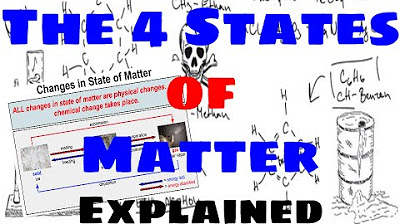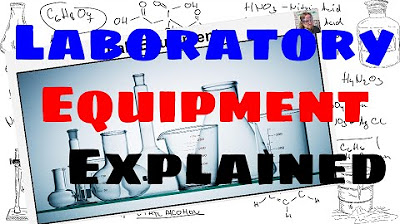APES Topic 4.2, Soil Formation & Erosion
Summary
TLDRIn this educational video, Mr. V discusses the process of soil formation and erosion, emphasizing the importance of parent material and weathering. He explains how soil layers form through a combination of mechanical, biological, and chemical processes influenced by factors such as climate, topography, and biological activity. The video also covers the impact of human activities like deforestation, overgrazing, and improper irrigation on soil health, and introduces various types of erosion, including splash, sheet, and gully erosion, highlighting the significance of sustainable land management.
Takeaways
- 🏔️ Soil formation begins with parent material, which is the original bedrock from which the soil is derived.
- ⛰️ Weathering is a key process in soil formation, involving mechanical breakdown through wind, water, and biological activity.
- 🌱 Organic material plays a role in the biological breakdown of soil and contributes to the formation of the O horizon, rich in organic matter.
- 🌀 Different soil layers form, including the C horizon (parent material), B horizon (subsoil with root penetration), A horizon (surface soil), and O horizon (top organic layer).
- 🌡️ Climate significantly affects soil formation, with dry climates and water availability influencing the development of soil layers.
- 🏞️ Topography, such as the presence of mountains or flatlands, impacts the soil formation process and the distinctness of soil layers.
- 🌳 Biological factors, including the presence of plants and their root systems, influence soil structure and erosion resistance.
- ⏳ Time is a crucial factor in soil development, with longer periods allowing for more distinct layer formation.
- 🌊 Erosion can occur naturally through rain, wind, and gravity, or be exacerbated by human activities such as poor soil management.
- 🌳 Deforestation, overgrazing, and the use of pesticides and fertilizers are human factors that can lead to soil erosion and degradation.
- 🌾 Tillage and irrigation practices can affect soil structure and contribute to erosion if not managed properly.
Q & A
What is the primary source of soil according to the script?
-Soil primarily comes from its parent material, which is the original bedrock or rock from which it is derived.
What are the main processes through which the parent material is weathered to form soil?
-The parent material is weathered mechanically through wind or water, and sometimes biologically, leading to the formation of soil.
Can you describe the different layers of soil as mentioned in the script?
-The script describes soil layers starting from the bedrock at the bottom, followed by the C horizon, a mix of A and B horizons, and finally, well-developed soils have an O horizon at the top with organic material.
What factors affect the formation of soil horizons?
-Factors affecting soil horizon formation include parent material type, climate conditions, topography (mountains or flatland), biological factors such as plant roots and grass, and time.
What is the role of biological factors in soil formation?
-Biological factors like bushes, roots, trees, and grass contribute to the breakdown of soil. For example, tap roots can penetrate deep into the soil, influencing its structure, while grass can help prevent erosion.
What are the different soil horizons mentioned for the AP exam?
-The soil horizons mentioned are the O horizon with organic matter, the A horizon as the surface layer, the B horizon where many roots go, the sub strata resembling the parent material, and the C1 horizon which is the bedrock itself.
What is the difference between natural and anthropogenic soil erosion?
-Natural soil erosion occurs through natural processes like rain or wind, while anthropogenic erosion is caused by human activities such as poor irrigation, crop management, and deforestation.
How can human activities contribute to soil erosion?
-Human activities contributing to soil erosion include deforestation, overgrazing, use of pesticides and fertilizers which alter soil chemistry, tillage practices, and improper irrigation.
What are some types of soil erosion mentioned in the script?
-Types of soil erosion mentioned are splash erosion, sheet erosion, real (rill) erosion, gully erosion, and stream bank erosion.
How can improper irrigation practices exacerbate soil erosion?
-Improper irrigation can lead to excessive water runoff, which washes away the top layers of soil, contributing to erosion.
What additional resources are suggested in the script for further understanding of soil formation and erosion?
-The script suggests checking out other resources for a more in-depth understanding, though it does not specify the exact resources.
Outlines

Dieser Bereich ist nur für Premium-Benutzer verfügbar. Bitte führen Sie ein Upgrade durch, um auf diesen Abschnitt zuzugreifen.
Upgrade durchführenMindmap

Dieser Bereich ist nur für Premium-Benutzer verfügbar. Bitte führen Sie ein Upgrade durch, um auf diesen Abschnitt zuzugreifen.
Upgrade durchführenKeywords

Dieser Bereich ist nur für Premium-Benutzer verfügbar. Bitte führen Sie ein Upgrade durch, um auf diesen Abschnitt zuzugreifen.
Upgrade durchführenHighlights

Dieser Bereich ist nur für Premium-Benutzer verfügbar. Bitte führen Sie ein Upgrade durch, um auf diesen Abschnitt zuzugreifen.
Upgrade durchführenTranscripts

Dieser Bereich ist nur für Premium-Benutzer verfügbar. Bitte führen Sie ein Upgrade durch, um auf diesen Abschnitt zuzugreifen.
Upgrade durchführenWeitere ähnliche Videos ansehen

The Four States of Matter - Explained

Lab Equipment - Explained

3. Gr 11 Life Sciences - Population Ecology - Theory 3 Mark Recapture Method

4. Gr 11 Life Sciences - Population Ecology - Worksheet 1

PENJASKES KELAS X - SOFTBALL

Introduction to Culture [AP Human Geography Review Unit 3 Topic 1]

Menentukan Mr ( massa molekul relatif )
5.0 / 5 (0 votes)
